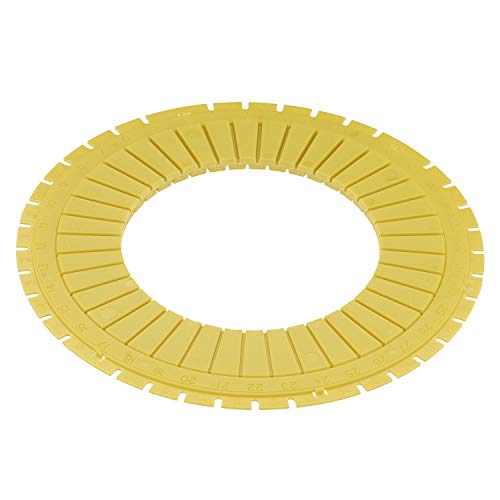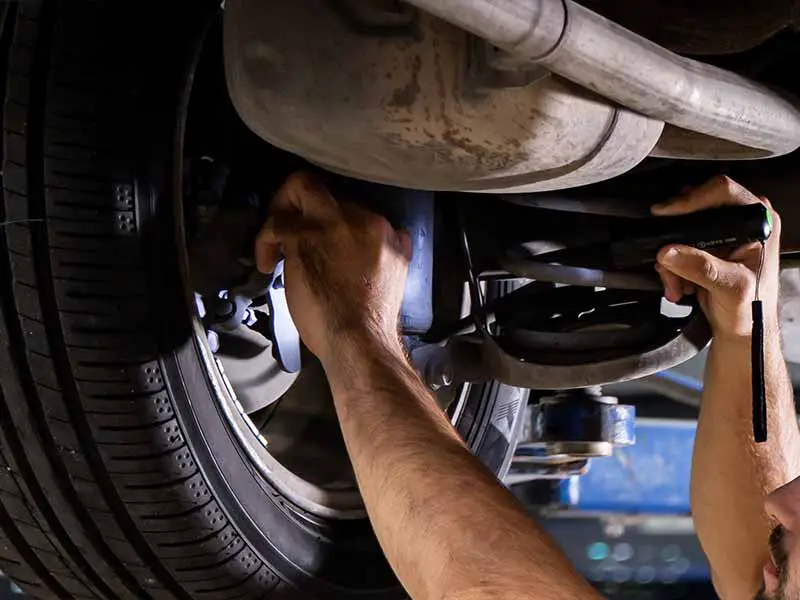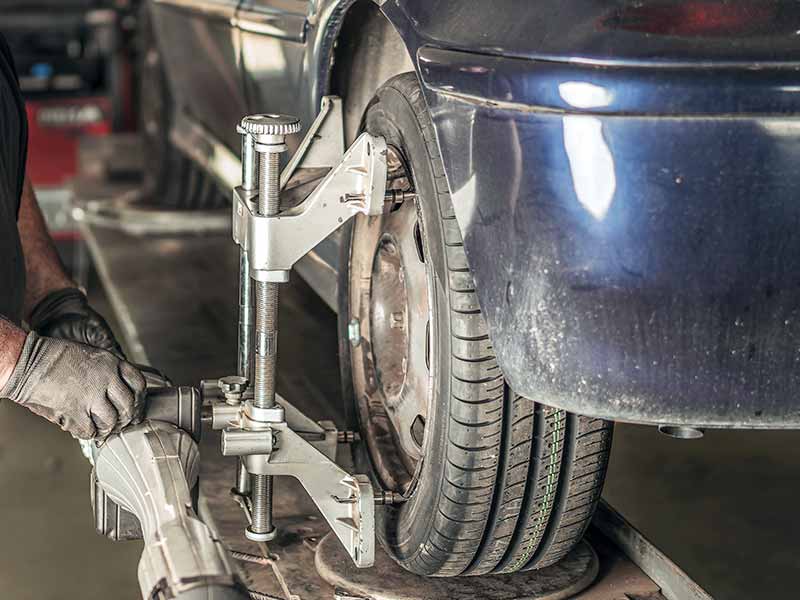Have you ever wondered how something as small as a shim can play such a big role in your car’s performance? Shims, these thin, unassuming pieces, are pivotal in keeping your vehicle running smoothly and safely.
What Are Shims Used For On A Car?
Shims are used on cars and trucks primarily for wheel alignment, where they adjust angles like camber, caster, and toe to ensure proper tire alignment and vehicle handling. Besides alignment, shims serve several other functions, including:
- Ensuring precise brake pad alignment and reducing noise in brake systems.
- Adjusting suspension components for improved vehicle handling and stability.
- Aligning engine and transmission components for optimal performance.
- Assisting in bodywork during restoration or collision repair, ensuring a perfect fit and alignment of panels and doors.
In this article, we delve into the various roles shims play in cars and trucks, with a particular focus on their critical function in wheel alignment and how they contribute to maintaining your vehicle’s performance and safety.

Alignment Shim Example
Understanding Shims in Automotive Context
When it comes to your car’s performance, little things can make a big difference. That’s exactly the case with shims. These small, often overlooked components play a crucial role in several aspects of your vehicle, especially when we talk about wheel alignment and tire performance.
What are Shims?
Shims are thin, often wedge-shaped pieces used in a variety of mechanical applications, including in cars and trucks. Their main purpose? To fill small gaps or spaces between parts, ensuring everything fits together perfectly. In the automotive world, they’re like the unsung heroes, quietly working behind the scenes to keep your ride smooth and your tires in good shape.
Types of Shims in Vehicles
- Alignment Shims: These are crucial for adjusting wheel angles. Whether it’s for toe, camber, or caster adjustments, alignment shims help keep your wheels perfectly aligned.
- Brake Shims: Used in the braking system, these shims prevent excessive noise and vibration, ensuring a smoother braking experience.
- Suspension Shims: These help in fine-tuning the suspension system for better handling and stability.
Why Shims Matter
Imagine driving a car that pulls to one side or wears out its tires unevenly. Not ideal, right? That’s where shims come in. By making precise adjustments, they ensure your vehicle’s wheels are aligned correctly, which is crucial for several reasons:
- Extended Tire Life: Proper alignment means your tires wear evenly, saving you from frequent replacements.
- Improved Handling: A well-aligned car handles better, making your driving experience safer and more enjoyable.
- Fuel Efficiency: When your wheels are aligned, your car doesn’t have to work as hard, which can lead to better fuel efficiency.
To understand more about how various suspension parts affect wheel alignment and why it’s so crucial, check out our in-depth article on What Suspension Parts Affect Alignment.
Shims for Car Alignment – An In-Depth Look
Wheel alignment might seem like a small part of your car’s overall health, but it has a huge impact on how your car drives and how long your tires last. In this section, we’re zooming in on how shims play a pivotal role in car alignment, focusing especially on their influence on tire performance.
The Role of Shims in Car Alignment
When we talk about wheel alignment, we’re essentially discussing the angle at which your wheels sit relative to your car’s body. It’s all about making sure that your tires are parallel to each other and perpendicular to the road. This is where alignment shims step in. Here’s what they do:
- Precision Adjustment: Shims are added or removed to fine-tune the wheel alignment. Think of them as the detailed editors of your car’s alignment story.
- Camber Correction: One of the key roles of shims is in adjusting the camber angle – the inward or outward tilt of the tire when viewed from the front. This is crucial for tire longevity and vehicle safety.
How Shims Affect Wheel Alignment
- Correcting Camber: If your car’s camber is off, it can lead to uneven tire wear. Shims are used to adjust this angle, ensuring that the tire’s tread life is maximized.
- Adjusting Toe and Caster: While less common, shims can also be used for adjusting the toe (the direction the tires point) and caster (the angle of the steering axis) in some vehicles.

Caster/Camber Shims
Shims and Wheel Alignment Adjustments
In the world of automotive maintenance, precision is everything. Shims, although small, play a critical role in achieving this precision, particularly in wheel alignment. This section delves into the specifics of how shims are used for wheel alignment adjustments, focusing on camber adjustments and their implications.
Shims in Camber Adjustment
Camber, the angle at which the tire leans relative to the vertical axis of your car, is crucial for tire health and vehicle handling. Here’s how shims come into play:
- Adjustment Process: By inserting or removing shims at the suspension mounting points, technicians can alter the camber angle. This helps in achieving the ideal stance for your tires, ensuring they wear evenly and maintain good contact with the road.
- Precision Tuning: Shims allow for fine adjustments, often to fractions of a degree, ensuring that your vehicle’s alignment is as precise as possible.
Limitations and Capabilities of Shims
- Not a One-Size-Fits-All Solution: While shims are versatile, they may not be suitable for all types of vehicles or alignment issues. The vehicle’s design and the extent of alignment needed play a role in determining if shims are the right choice.
- Balancing Act: It’s crucial to balance shim adjustments across the vehicle to maintain proper alignment. Overcompensating on one wheel can lead to issues on the opposite side.
Practical Implications
Understanding the role of shims in camber adjustment isn’t just for mechanics. For car owners, it’s about recognizing the signs of improper alignment and the potential need for shim adjustments. Common signs include:
- Uneven Tire Wear: If you notice that one side of your tire is wearing down faster than the other, it could be a camber issue.
- Vehicle Pulling to One Side: This can also indicate a problem with camber alignment.

Brake Shims
Other Uses of Shims in Cars and Trucks
While shims are stars in the wheel alignment show, their role in the automotive world doesn’t end there. Let’s shift gears and look at other places in your car or truck where shims make an important contribution.
Shims in Brake Systems
Brake shims are key players in your vehicle’s braking system. Here’s how they make a difference:
- Noise Reduction: They help in dampening vibration and noise when you hit the brakes. No one likes a squeaky brake!
- Enhanced Brake Performance: By ensuring proper alignment of brake pads, shims contribute to smoother and more effective braking.
Shims in Suspension Systems
The suspension system is all about balance and stability, and shims have a role to play here too:
- Handling and Stability: Suspension shims can be used to adjust the height or angle of suspension components, contributing to better vehicle handling and stability.
- Custom Tuning: For performance enthusiasts, suspension shims offer a way to custom-tune their vehicle for specific handling characteristics.
Other Applications
Shims aren’t just limited to brakes and suspension. They can be found in various parts of a vehicle:
- Engine and Transmission: Shims are used to ensure proper spacing and alignment of gears and other moving parts.
- Body Work: In restoration or collision repair, shims help in aligning panels and doors for a perfect fit.

Body Panel Shims
The Right Shim for the Right Job
Choosing the correct shim for your car or truck is a bit like picking the right tool for a job – it needs to be precise, suitable for the task, and reliable. Let’s break down what you need to consider when selecting shims and highlight some common mistakes to avoid.
Factors to Consider When Selecting Shims
- Material: Shims come in various materials like metal, plastic, and rubber, each with its own benefits. Metal shims are durable and ideal for heavy-duty applications, while plastic and rubber shims offer more flexibility and vibration damping.
- Thickness and Size: The size and thickness of the shim directly affect its ability to adjust alignment or fill gaps. It’s crucial to choose shims that match the specific requirements of your vehicle.
- Type of Adjustment: Different types of shims cater to different adjustments – whether it’s for wheel alignment, brake systems, or suspension tuning. Ensure you’re getting the right type for your needs.

Maintenance and Inspection of Shims
Regular maintenance and timely inspection of shims are as crucial as any other aspect of vehicle care. Properly maintained shims not only ensure optimal vehicle performance but also contribute to your safety on the road. Let’s explore the guidelines for shim maintenance and the telltale signs that indicate a need for attention.
Guidelines for Shim Inspection and Maintenance
- Regular Checks: Incorporate shim inspections into your regular vehicle maintenance schedule. This is especially important for areas that are crucial to safety, such as brakes and suspension.
- Look for Wear and Tear: Over time, shims can wear out, especially in high-stress areas like wheel alignment and braking systems. Regular inspections can help you spot wear before it becomes a problem.
- Professional Assessment: Sometimes, it takes an expert eye to spot issues with shims. Don’t hesitate to have a professional mechanic or technician take a look during your regular service appointments.
Signs of Shim Replacement or Adjustment Needs
- Unusual Noises: Listen for any new or unusual noises, especially during braking or when driving over bumps. Squeaks, rattles, or grinding sounds can indicate shim issues.
- Uneven Tire Wear: As we discussed earlier, uneven tire wear is often a sign of alignment issues, potentially stemming from shim problems.
- Handling or Braking Issues: If your car isn’t handling as well as it used to, or if braking feels different, it could be related to shim alignment in your suspension or brakes.
- Visible Damage: In some cases, you might be able to see physical damage or displacement of shims during a visual inspection.
Resources
Below are some links you may find helpful when learning about tires:
Final Thoughts
From ensuring precise wheel alignment to enhancing braking and suspension performance, shims are integral in ensuring your car operates efficiently and safely. Remember, while shims might be small, their impact on your vehicle’s health and your driving experience is significant.
Regular maintenance checks and understanding when to consult a professional are key to keeping your vehicle in top condition. Whether you’re a seasoned car enthusiast or a curious car owner, recognizing the importance of shims can lead to better vehicle care and performance.
Good luck and happy motoring.




